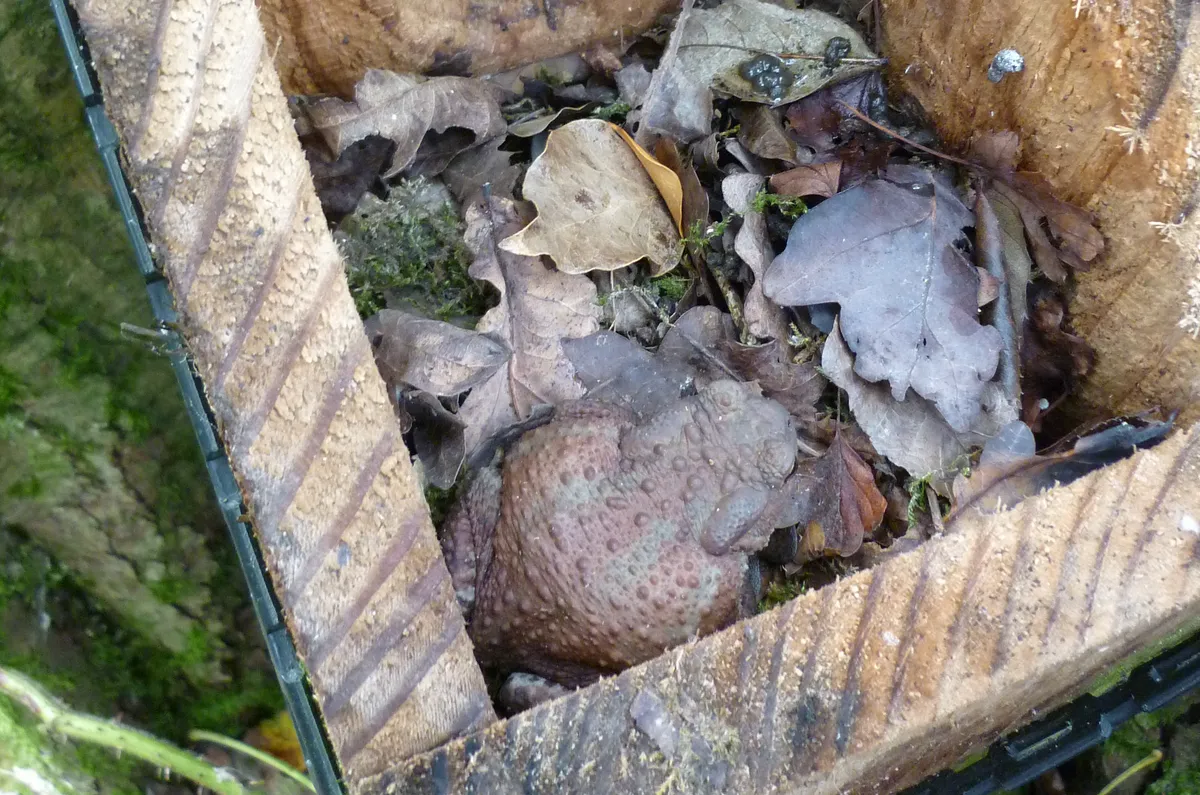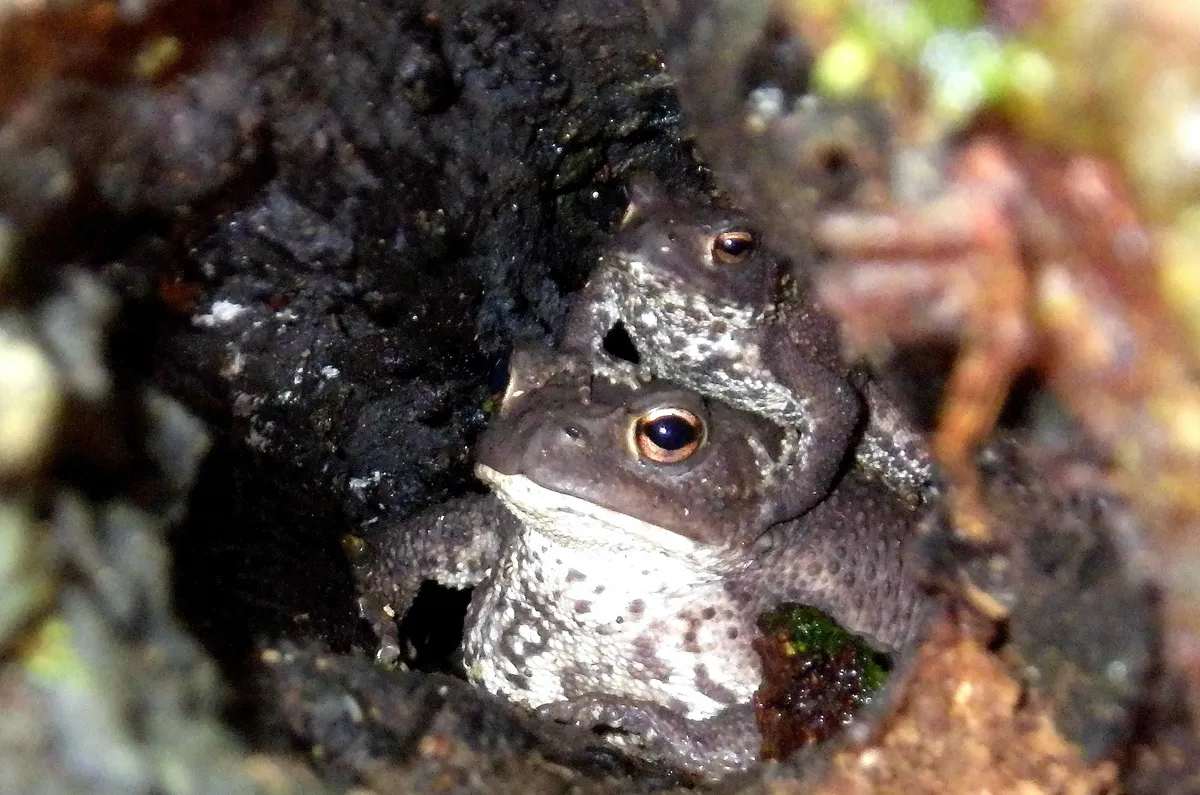During a recent bat and dormice survey conducted by the University of Cambridge and Froglife, volunteers were surprised to find common toads living in nest boxes and tree cavities.
50 records of common toads were found in these surveys, but the number could be much greater, due to the fact that the surveys do not regularly look in tree hollows higher than 3m up a tree.
The exciting discovery of arboreal behaviour in common toads means that tree cavities might represent an even more important ecological feature than conservationists thought.

“We couldn’t believe what we found. We’re used to discovering woodland birds and other small mammals in nest boxes but we hadn’t considered finding amphibians in them,” said Nida Al-Fulaij, Conservation Research Manager at People’s Trust for Endangered Species (PTES), who supported the research.
Why toads are climbing trees and using nest boxes is currently unknown, though factors could include searching for food, avoiding predators, and evading parasites.

Froglife research in 2016 showed that common toads have declined by 68% over the last 30 years across the UK. The recent findings highlight the importance of protecting our remaining natural woodland habitats, especially ancient trees with veteran features – such as hollows and cracks – for all wildlife.
Froglife are calling on members of the public to record any sightings they have of amphibians in trees on their Dragon Finder App.
Top image credit: Getty Images
